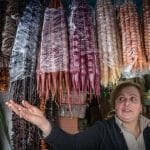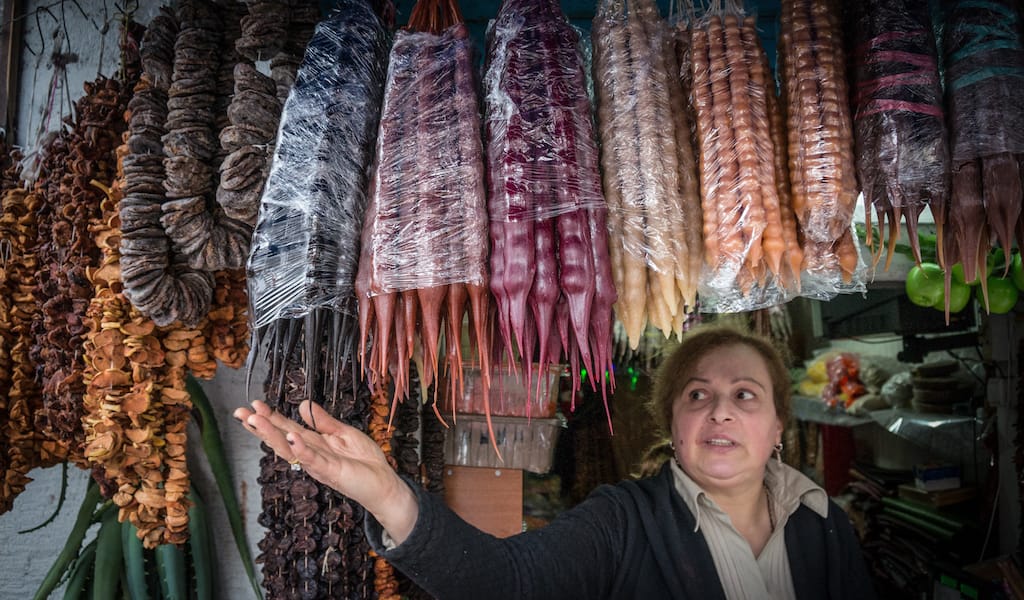Editor’s note: This is the second installment of “Spring (Food) Break 2013,” our weeklong celebration of spring’s culinary bounty. This guest post is by Lesley Téllez, a freelance writer and the author of the blog The Mija Chronicles, who recently moved to New York after four years in Mexico City.
The first time it happened to me, I didn’t blame the mango.
Little bumps had sprung up around my lips just a few days after I accepted a luscious, juicy piece of mango from a Mexican market vendor. The bumps itched, and when I scratched them, they swelled. I thought the problem was my lip gloss. But the doctor said no – it was an allergic reaction, most likely to food. One more teeny bite of mango confirmed the diagnosis.
How could I be allergic to mangoes? I was living in Mexico City, which every spring transformed into mango paradise. Fat orbs in orange, butter and crimson tones appeared in the markets, and vendors would dangle wedges off the tips of their knives, luring me in for a taste. “Güerita! Quiere mango? Sin compromiso, eh?” (“Light-skinned girl! Do you want mango? No strings attached, eh?”) I had always said yes and greedily stuffed the entire thing in my mouth, not caring that the juice made my lips and hands sticky.
On the streets, young men with wheelbarrows popped up on corners and in tree-lined medians, selling mango slices doused in vinegary hot sauce. But it was at the outdoor markets called tianguis where the variety of mangoes always amazed me the most: the Ataulfo (named after a Chiapaneco landowner), the Manila mango, the Tommy Atkins, the Kent.  You could wander through and buy one of each, then subtly compare and contrast their differences. I learned that a very ripe Ataulfo was too musky for me, for instance, but the fibrous, tangy Kent was just right.
You could wander through and buy one of each, then subtly compare and contrast their differences. I learned that a very ripe Ataulfo was too musky for me, for instance, but the fibrous, tangy Kent was just right.
By the end of the season, in the early fall, mangoes were so cheap that I would almost give in when the market vendors wheedled, “Just buy two kilos; it’s my only sale of the day and then I can go home.” Now, being allergic, I had to bypass those vendors entirely. Even the Larousse Diccionario Enciclopédico de Gastronomía Mexicana reinforced the mango’s powers: “In Mexican culture, [mangoes] relate to all that is sweet, flavorful, beautiful and seductive.”
These days, when vendors ask, “Quiere mango, güerita?” I look at them sadly and tell them I’m allergic. They look at me sadly, too. I can look at but not touch all that is fresh and fecund about spring in Mexico City.
Published on March 26, 2013
Related stories
May 10, 2019
QueensBack when it was called Noisette, we'd passed by Paris Oven many times in the (not quite) year that it had been open. But whenever we’d walked down those sometimes clamorous blocks of 30th Avenue in Astoria, Queens – not far from a bagel shop, a pizzeria, a comfort-food hotspot and a New Orleans-themed bar-restaurant,…
September 23, 2018
TbilisiA vendor in the Deserter’s Bazaar shows off her churchkhela, a very traditional Georgian specialty usually homemade from grape juice thickened with flour and nuts. They say that churchkhela were created by Georgian warriors as a sugar hit that wouldn’t perish on a long march – in other words, one of the world’s earliest energy…
June 22, 2023
LisbonOne of the joys of Lisbon’s food scene is the access it allows to cuisines from across the Lusophone world. And one of the most represented is the food of Cabo Verde (formerly known as Cape Verde), an archipelago of 10 islands off the western coast of Africa. Its ubiquity is due to immigrants from…

















































































